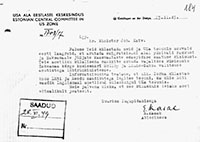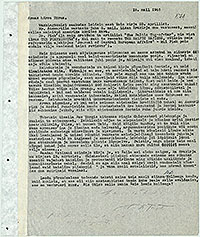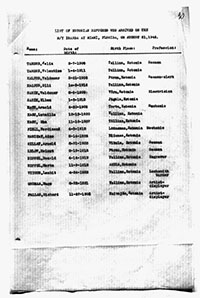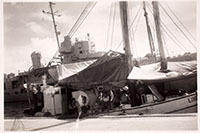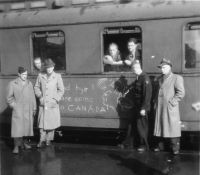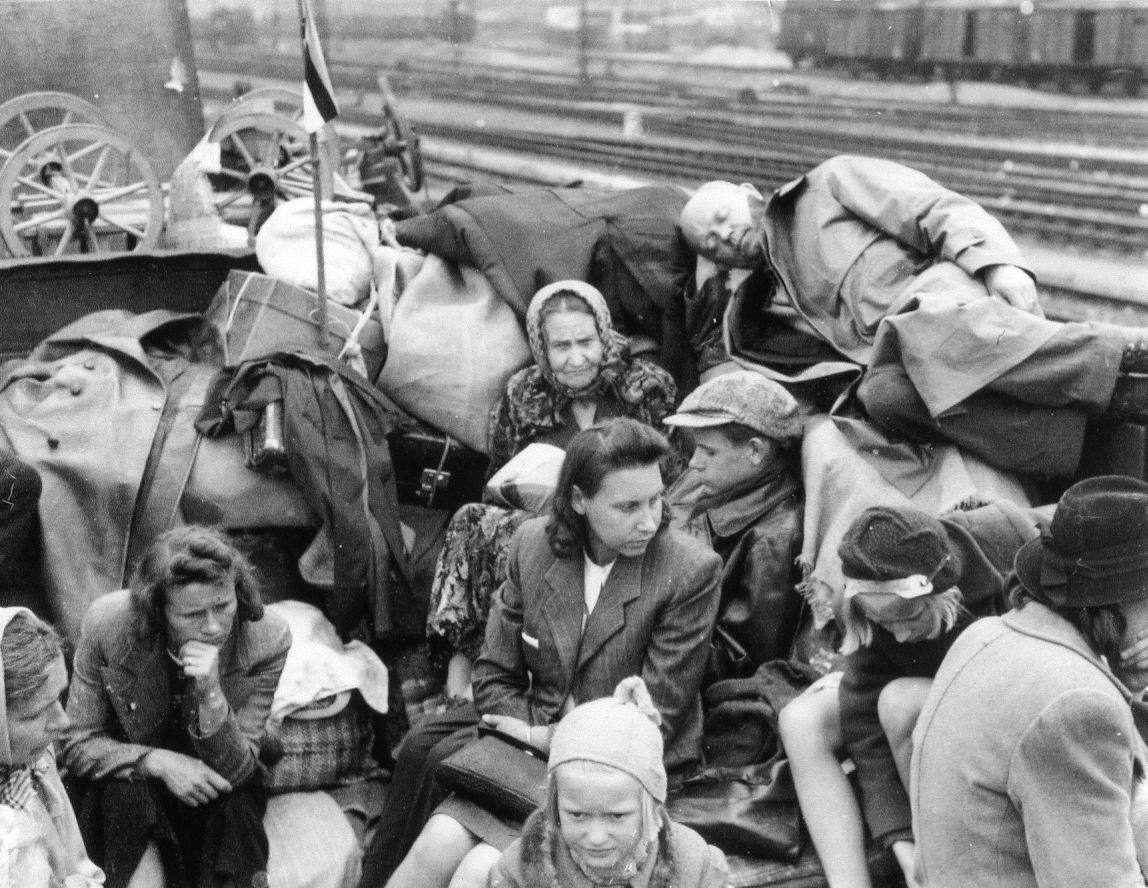The resettlement of refugees
In most countries after World War II there was a shortage of labour, which was a good way to mitigate the resettlement of refugees. Resettlement may have occurred with the individual and the family, as well as intergovernmental migration; the latter could lead to volunteer missions and financial support. With the establishment of the IRO in 1947, individual resettlement with employer support took place, touching mostly highly skilled DPs.
Each country devised DP migration from certain requirements concerning in particular family status, health, education, and past work experience. The most preferred were young, single, and able-bodied people with no dependants (children, elderly, disabled). Skilled labour jobs were much easier to find than jobs for DPs with higher education.
Most Estonians made a decision to leave Germany at the end of 1946 and early 1947. The host country overseas was not generally known among Estonians, the United States and Canada were remote and culturally unfamiliar places. Rather it was recommended to stay in Europe, which would also make it easier to return to the homeland if the political situation changed. However, the majority of Estonians in Germany relocated to the US, Canada and Australia.
The largest campaigns for relocation were those in the UK “Balti Luiged“ and “Hõissa läände”, the first of which was designed to recruit women for nursing and assistants in hospitals, nursing homes and households, and the second to bring in men and women to the UK, as many jobs remained vacant due to the emigration of the English to Canada that had left a shortage of filled skilled labour positions. Baltic DPs were also recruited by the Belgian campaign, "Black Diamond" for coal miners, but this option was not popular among Estonians.
During the Belgian and British campaigns, the opportunity for Baltic people arose to relocate to South America, especially countries like Argentina and Brazil. Those who saw the political situation in Europe as critical and could later go to the United States or Canada from South America accepted the offer. There were those for whom the thought of settling in a foreign land seemed frightening. States that saw DPs as a workforce, changed their legislation, mostly since 1948. After this, the most popular states for Estonians to resettle were namely Australia, Canada and US.
The number of displaced Estonians from Germany in larger countries in the 1950s:
| United States | 12 000 |
| Canada | 11 370 |
| Australia | circa 6000 |
| Great Britain | 5500–6000 |
| Sweden | 1000 |
| Belgium | 270 |
| Argentina | 201 |
| Venezuela | 192 |
| New Zealand | 189 |
| France | 179 |
| Brazil | 158 |
| The Netherlands | 110 |
| A letter from vice-president of the Estonian Central Committee in US zone, Mr. Elias Kasak, to Estonian consul general, Mr. Johannes Kaiv, containing a request to visit DP camps and help to solve problems both of those compatriots emigrating to the USA and for those staying in Germany. November 25, 1949. ERA.1608.2.1640, page 184 (digitized, www.ra.ee/saaga) |
|
| Karl Robert Pusta gives an overview about the conditions of immigration to the United States of America in a letter to August Torma in 1945. ERA.1622.2.78, page 171 (digitized, www.ra.ee/saaga) |
|
| The lists of Estonians who sailed by boats from Sweden to Miami in August and September, 1946. ERA.1608.2.1635, pages 90–92 (digiteeritud, www.ra.ee/saaga) |
|
| A motor yacht “Linda” and Estonian refugees arrived the United States of America. A man with tie on both of the group photos is Ernst Jaakson. Miami, October 18, 1946. ERA.1608.2.1635, pages 69, 70 and 72 (digiteeritud, www.ra.ee/fotis) |
|
| Estonian displaced persons leaving Germany and going to Canada for forestry, September 1947. VEMU FK.61-17 |
|
| Displaced persons in a open coal wagon of Jena-Augsburg direction in June or July 1945. VEMU FK.61-56 |
